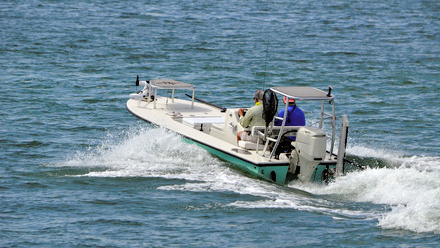IMarEST’s new President talks of a new age in coastal protection
Yves De Leeneer’s inaugural Presidential Lecture explained how an innovative natural approach could revolutionise coastal management
On Wednesday, April 24th, the 121st President of IMarEST, Yves De Leeneer, gave his first Presidential Lecture to members in attendance at the Leonardo Royal Hotel London Tower Bridge, as well as others watching live online.
In a career with more than 30 years of experience in offshore oil, gas and renewable energies, Yves has intimate first-hand knowledge of engineering, design and project management, as well as the installation and operation of floating production storage and offloading systems (FPSOs) and floating storage and offloading systems (FSOs).
However, more than just the technical side of the human marine sector, Yves also maintains a deep interest in the natural marine world. Having spent 10 years on the board of the Biosphere Foundation, which specialises in coral reef research around the world, he was instrumental in the publication of the IMarEST book, Coral Reefs: Handbook for the Future.
Yves’s speech drew on all these experiences.
“Although I am a naval architect specialising in subsea systems and hydrodynamics, I want to show you how you can have projects that have engineering, science and technology in them,” Yves told those in attendance.
“In general, most engineering projects often have a negative aspect to them from an environmental point of view. Even if you do it right, there is always going to be something. So, I thought, what if we try to mimic the environment so we are encroaching on it less with a man-made system and see how we can have less of an impact.”
Underwater options
The area where Yves has focused his attention is coastal erosion protection, specifically looking at breakwaters (structures which lessen the power of waves) and what can be man-made but also draw its influence from nature.
While surface breakwaters work well, they are expensive, often unattractive, and require maintenance. Alternatively, submerged breakwaters are more aesthetically pleasing because they stay below the surface, and while they don’t stop the entire wave passing through, they do work well in preventing the highest part of the wave passing and thereby reducing its power.
“I looked at it and felt, ‘Why don’t we do a natural submerged breakwater?’, ‘What are these breakwaters in nature?’ They are coral reefs. So can we build something that is partially man-made, partially coral reef?” Yves said.
“A coral reef is made from marine fauna and flora. What you need for that to thrive is correct water temperature, a certain amount of sunlight and a certain amount of food. You can’t really control that, but what you can control is the substrate area (the surface where organisms grow): the greater the substrate area for the reef to attach to, the higher [the] chance something will grow there.
“We said, let’s get something with a lot of area, and let’s make sure there are areas for fish to be protected, and let’s do something where flora and fauna can be housed and supported.”
The resulting design for this coral reef building structure, as Yves showed attendees, is essentially a concrete core, 2m long, with metal pipes emanating from the centre.
“The pipes are great for small fish or plankton to go inside and be protected. And the surface area you get from the inside and outside of the pipes is much greater than you would get from a stone wall breakwater,” Yves enthused.
Results in the real world
One year after being installed in Dubai, this system had already seen significant plankton growth and attracted fish life.
“That was after only one year. The idea is that, after 10 years, the tubes are completely filled up and what you have built is a skeleton and the rest is filled up with coral. The coral takes over,” Yves said.
In summary, Yves pointed out the system has the same advantages as conventional breakwater systems when it comes to reducing wave energy, and thereby decreasing erosion, while at the same time promoting marine flora and fauna and providing protection for it against waves and current flows.
And all while using a fraction of the raw materials needed for a standard breakwater.
“Most things in the offshore world have a design life of 20 years, sometimes pushing to 30 years,” Yves concluded.
“Here, what is great is that we don’t really care about the design life because after a few years it becomes a natural product and, in a way, it has an unlimited design life.”
Main image: Yves De Leeneer; credit: IMarEST






